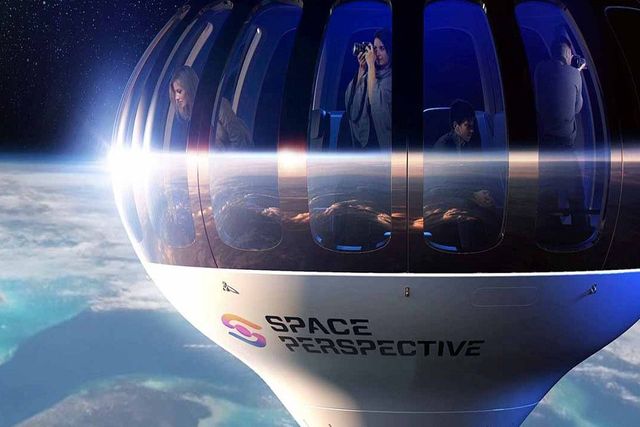The Age of Space Tourism Dawns
In the annals of human history, one chapter stands out as truly transcendent—the advent of space exploration. For decades, space travel was the exclusive realm of astronauts and scientists, but that narrative is rapidly changing. The dawning era of space tourism is ushering in a new era of adventure, exploration, and human curiosity. In this article, we embark on a journey beyond the stratosphere to explore the burgeoning field of space tourism.
A New Frontier Beckons:
Space tourism, once a distant dream, has now become a tangible reality. The lure of experiencing the cosmos has enticed not only seasoned astronauts but also civilians, offering them the chance to float in microgravity, witness the curvature of Earth, and gaze upon the boundless depths of the universe.

The Trailblazers:
Pioneering the path to space tourism are visionary companies such as SpaceX, Blue Origin, and Virgin Galactic. These titans of industry, led by the likes of Elon Musk, Jeff Bezos, and Richard Branson, have dedicated their resources and ingenuity to make space accessible to civilians.
Suborbital Adventures:
For those seeking a taste of the cosmos, suborbital space tourism offers an exhilarating experience. Passengers are catapulted into the realm of weightlessness for a brief but breathtaking journey. Virgin Galactic’s SpaceShipTwo and Blue Origin’s New Shepard are among the frontrunners in this suborbital space race.
Orbital Escapes:
For the ultimate space voyage, orbital tourism beckons. Here, intrepid travelers embark on missions to the International Space Station (ISS) or other orbital destinations, living and working alongside astronauts. Companies like SpaceX and Axiom Space are making these ambitious endeavors a reality, with plans for private missions and commercial space stations in the works.
The Price of Admission:
While space tourism is no longer confined to the realm of science fiction, it remains an exclusive adventure due to its cost. Tickets to suborbital flights can range from hundreds of thousands to millions of dollars, while orbital missions can reach tens of millions. However, as technology advances and competition intensifies, these costs are expected to decrease, paving the way for more inclusive access.
Environmental Considerations:
As space tourism gains momentum, environmental concerns have surfaced. Rocket emissions and the carbon footprint of space travel are being scrutinized, pushing the industry to explore cleaner propulsion technologies and more sustainable practices to minimize its impact on Earth’s atmosphere.
The Astronaut Experience:
Beyond the thrill of weightlessness and the breathtaking views, space tourism offers a profound perspective-altering experience. Astronauts frequently describe it as a transformative journey that deepens their appreciation for Earth’s beauty, unity, and fragility, fostering a sense of global stewardship.
The Future of Space Tourism:
The future of space tourism holds boundless potential. As the industry continues to evolve, we can anticipate increasingly diverse offerings, from lunar expeditions to space hotels. Moreover, the democratization of space travel could herald a new era of scientific research, manufacturing, and resource exploration in space.
In Conclusion:
Space tourism is more than just an indulgence for the elite; it’s a testament to human ingenuity, courage, and the enduring human spirit of exploration. As technology advances, regulations evolve, and costs become more accessible, the cosmos will open its doors to a diverse array of adventurers, researchers, and dreamers. With each ticket to the stars, we collectively take a step closer to realizing humanity’s timeless dream of becoming citizens of the universe, forging a legacy that extends beyond our earthly horizons.

